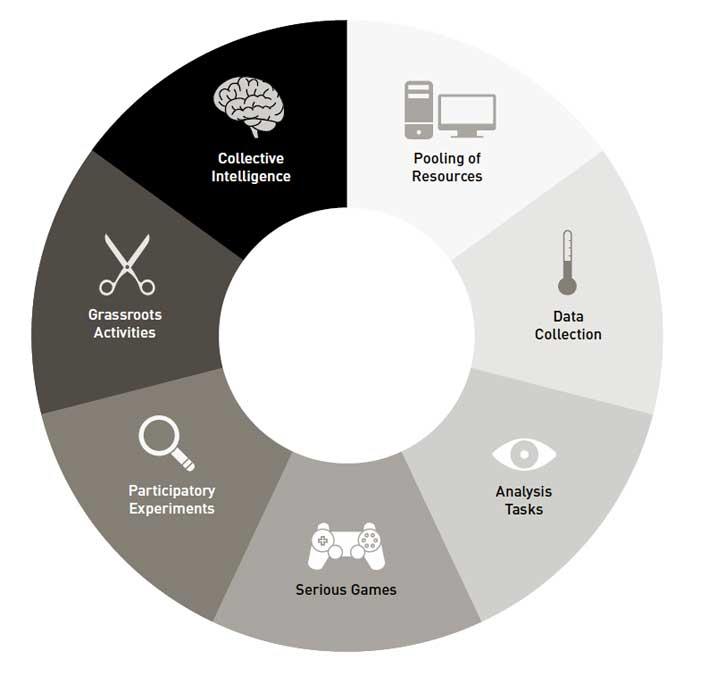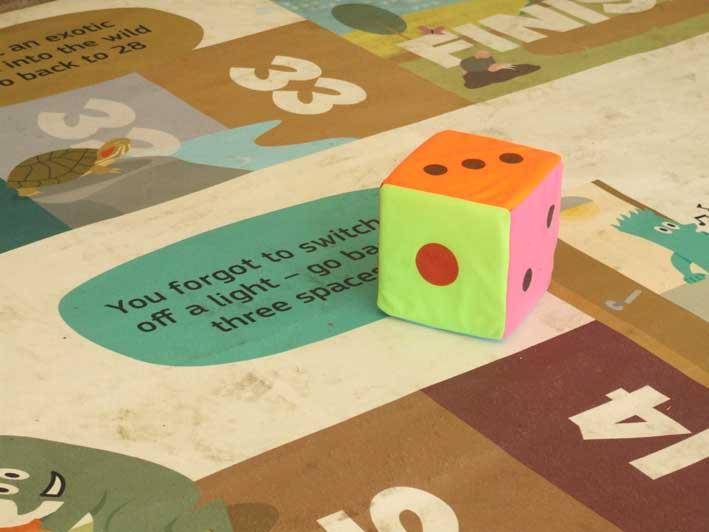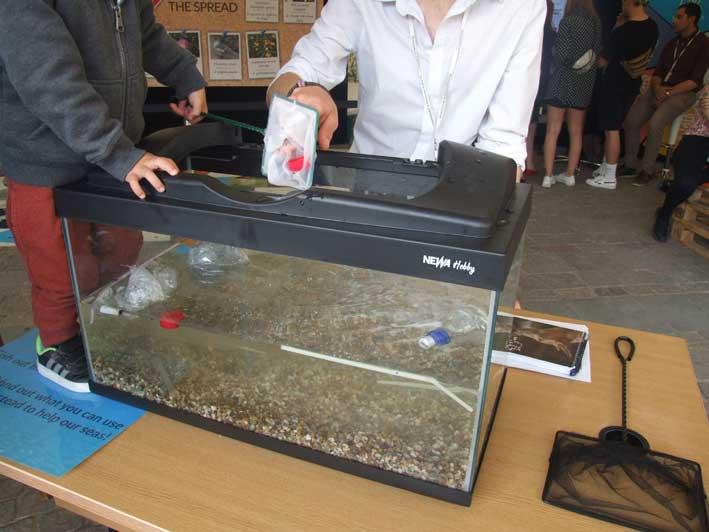How often does one think whether his choices harm or benefit the environment? By now we all know that choosing to use a disposable plastic cup is not a sensible choice for the environment. But does it ever cross your mind that other choices you take actually do weigh on our environment and in turn influence our quality of life? One such choice, for example, is the apparently innocuous decision to release exotic pets, like snakes or squirrels from their confined quarters. Some of these pets are very resilient or are adapted to thrive in overseas climates such as ours, so when released, they literally invade our natural or urban areas by multiplying rapidly, at times even outcompeting our naturally-occurring wildlife. There is no doubt about it, your choices as a Citizen are imperative driving forces of a quality environment and ultimately, our wellbeing.

The Environment and Resources Authority (ERA) is fully aware of this link, and systematically aims its actions to positively influence choices. It is with this concept in mind that the Authority is investing in various citizen engagement projects, combining arts, science and technology to inform the general public of issues around us, and show how they can assist and combine forces to safeguard the environment and ensure a sustainable approach towards a better quality of life.

One such initiative is ERA's collaboration with the Żigużajg festival, which for the second year running, is utilising the arts as a means to engage children in the environmental sciences. Citizen engagement is very much in line with the ERA's philosophy as the national regulator on the environment. ERA kickstarted this collaboration by exhibiting the winning posters of the children's competition Air Quality: Our Environment & Our Role which focused on the environmental science behind the air we breathe and the community's role to minimise air pollution.

This year, we informed the 'adults of the future' of the link between their choices and the state of the environment and furthermore, immersed them hands-on in the monitoring techniques ERA already uses. The environmental media tackled by the 2019 festival included both air and water. The latter will be seeing the Wonder Waters installation on the value of water. Children taking part in the festival will also be joining artist Alessio de Girolamo to create a huge temporary artwork which focuses on the importance of water in our lives and include workshops and performances led by the artist on the subject.
In the case of air quality, children themselves were informed and involved in helping ERA monitor the air quality. This experiment has been very successful and served as a good opportunity for students, parents and teachers alike to recognize that their daily decisions, especially those concerning travel, affect the quality of the environment around them.

ERA also designed an interactive installation to show how air quality varies around Malta, and the public, especially children were invited to engross themselves in this game during various festivals, such as the Valletta Green Festival and Science in the City. This 4x4m interactive floor projection experience was designed to target children specifically, and features aspects such as the main sources of air pollution, how air quality is monitored, the health effects of air pollution and the actions citizens can take to reduce their impacts on air quality. ERA is exploring how to continue extending the reach of this software to the younger generation in the coming years.
Citizen engagement is also seen as a way for contributing to a better environment, and recent developments in technology enabled us to capitalise on such a combination. Topics in line for this treatment include the impacts of invasive alien species - an issue of global concern, but particularly worrying in Malta, as an island state. Alien species are essentially species which are not naturally found in Malta, but are introduced by humans. These may have severe impacts on the environment, agriculture, fisheries and landscape, with some notable examples being alien insects attacking palms, like the palm weevil or causing diseases in agriculture and wild plants and animals, like the recent disease killing off all noble pen-shells (in-nakkra) in Malta or the diseases caused by alien species which have affected honey bees, tomatoes and selected fruit trees.
Various initiatives were carried out to map the location of invasive species like the crimson fountain grass (il-penniżetum, il-pjuma) and the freshwater crayfish (iċ-ċkal tal-ilma), which have become a menace. ERA's map showing their distribution in the Maltese Islands forms a solid foundation for the next steps of eradication or control initiatives. The latter are again being conducted through a collaborative approach, so as to enable the citizens themselves to partake in our shared mission of safeguarding our environment. In fact, the success of this initiative was all thanks to the contributions of interested persons who submitted the locations of these invasive species through digital means. Indeed, ERA and the Plant Protection Directorate have developed an app through which one can find out more on these species and report their locations and/or photos wherever encountered. Similar exercises are also addressing issues linked with alien fish, through the Spot the Alien Fish initiative of the University of Malta.
Modern technology also assists in increasing awareness and providing information - the Spot the Jellyfish process (setup by the University of Malta) enabled users to understand which jellyfish can sting and at the same time provide information for remedies in relation to noxious jellyfish, but also led to showcase the variety of jellyfish species in Malta.
Similar work was carried out in the last two years, by ERA with divers, who are assisting us in mapping rare and endangered species, as well as in collecting marine litter from our sea. Snorkelers and divers as well as beach users are considered very important stakeholders in reducing marine litter and the use of single use plastics, such as by replacing the single use plastic utensils with reusable ones of in different materials instead of plastic ones.
Coordination is definitely a key ingredient in other actions the Authority undertakes, such as the management of protected species and protected areas. For example, ERA has established an agreement with Nature Trust Malta, a national environmental NGO, on the rehabilitation and reintroduction of protected species, both terrestrial and marine, including hedgehogs, bats, turtles, dolphins, whales, reptiles and other protected animals. ERA covers the costs for raising awareness, medicinals, veterinary services and rehabilitation. Rehabilitated animals are then released back into the environment. This led to successful releases of many protected species - such as the success story on marine turtles, which in recent years have increased in number and have now also returned to our sandy beaches to lay their eggs in the summer months.
Specific events are also carried out to entice and attract people and families to nature-related events, including nature walks to protected areas by ERA officials, who pepper the walk with interactive games, and the organisation of other events like bat nights to see and hear these elusive night creatures, and boat tours, through which one can see the impressive Maltese cliffs and boulders from the sea, as well as our marine wildlife.
Similar coordination exists for the management of Natura 2000 sites: a network of protected areas which are core breeding and resting sites for rare and threatened species and some rare natural habitat types which are protected in their own right. Nowadays, all Natura 2000 sites are being managed thanks to collaboration with civil society - including environmental NGOs under ERA's supervision. Such a way of thinking is reaping tangible results, as witnessed by the case of Għadira s-Safra. The site has expanded in size through the inland relocation of the Coast Road and the rehabilitation of the road, which was made redundant due to these works. As a result, the buffer area between the highly trafficked road and the important Mediterranean temporary pool has increased. In total, Għadira s-Safra has expanded by approximately 40% and 4,300 cubic meters of soil were added and many native trees and plants were also planted in the area. ERA, together with Ambjent Malta, also saw to the removal of 8.5 tons of invasive alien species from the area, to promote the growth of indigenous plant life. The site also serves as the new home for a number of successfully transplanted trees. In this respect, ERA has also contributed to an app on Maltese Fauna and Flora which also provides information on Malta's Natura 2000 sites, in both Maltese and English.
Noting the success and feedback received from such initiatives, ERA is now looking at how to continue improving the environment in a manner that contributes to wellbeing. For this purpose, ERA strives to maintain an open channel with the public so as to provide environmental information and promote and instil sound environmental management. ERA is now updating its webpage to provide a more modern look with more easily accessible information, which will be provided in both Maltese and English. We are also improving the ways in which citizens can communicate with us, and various updates to our current citizen access systems are being devised, to enable an easier access to environmental information, including new systems on protected areas and air quality information, as well as customer care and permitting facilities. ERA also provides a dedicated system for environmental queries and complaints, which can be referred to [email protected]. ERA takes great pride in addressing citizen's environmental communication and aims to provide a reply to these communications from the public in a transparent and efficient manner, and well within the legal 30 day timeframe stipulated by legislation on the access to environmental information. More than 1,400 queries were addressed through this system during 2018 and during the first half of 2019 more than 900 communications from the public were addressed in the same manner.
ERA believes that citizens can make a direct contribution to environmental protection and management. It is impressive to see first-hand the high quality data that is collected by volunteers, and to witness the process of engaging people in understanding how their contributions assist and shape the future of this country. These initiatives not only enable a better understanding on how our daily choices impact the very world we live in, but offer opportunities of personally transformative experiences.
This article was first publish in the Noli Supplement which was distributed with The Malta Independent on Sunday on 10 November.